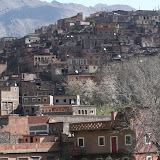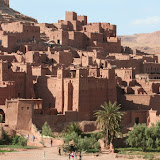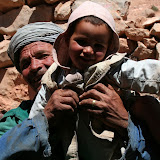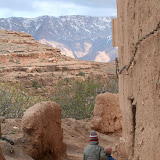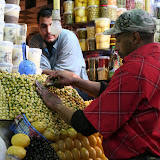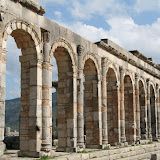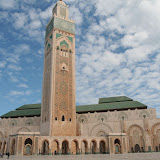Place Djemaa el-Fna, souks, restored houses, Royal palaces and tombs...and meals in beautiful riads--all in a days travel in Marrakech!
Kimberly
For photos, click here.
 |
| Marrakech |
The first place we headed out to was the Place Djemaa el-Fna, literally the “assembly of the dead.” For centuries, this unique gathering place has been the center of Marrakech and the symbol of the city. It received UNESCO World Heritage Site status in 2001. And today is still full of storytellers, musicians, snake charmers, and other performers. We enjoyed quite a tasty dinner here in the midst of the madness…with the best fresh squeezed orange juice I’ve ever tasted!
We started off the next day visiting the various souks (markets) in the medina: the Souk Haddadine (Blacksmiths), Souk Chouari (Carpenters), Souk Cherratin (Leather)….my favorite, the Souk des Babouches (Slipper Makers)! If only we bought a house already in San Francisco—there were so many things here I wanted to buy. We’ll just have to come back to get that steel hammered table, wooden door from Timbuktu, sconces for the garden…
After restraining myself from making too many purchases, we headed off for more historical sights. We visited the Ben Youssef Medera, a Koranic school founded in the mid 14th century, with incredibly ornate doorways and fine inlay work. Then we went next door to the Musee de Marrakech, the former home of a Moroccan minister of war which holds an interesting collection of Koran manuscripts, coins, ceramics, and textiles. What was most striking was the way they converted the house into the museum – with paintings even inside the hammam!
We also visited the Saadian tombs, once forgotten burial area for one of the past royal families. As the first Arab dynasty since the Idrissids, they marketd the end of Moroccan Berber rule. The united much of the country from Marrakech to Agadir, to Essaouira. The most impressive sultan of this dynasty would be Ahmed “El Mansour”—who maintained a time of wealth and peace for Morocco. His death in 1603 left the country in chaos, with three sons, none of whom could gain authority. Eventually Moulay Ismail and the Alaouites wrestled control of the country – and tried their best to destroy all the Saadians, and their legacy. The recent discovery of these tombs in 1917 was quite a surprise and now the tombs are a national treasure.
Dar Moha
81 rue Dar El Bacha – Medina
+212 (0) 24 38 64 00 / 24 38 62 64
www.darmoha.ma
-Very posh place with tables throughout the palatial house and around the swanky pool. I felt like we were at a private wedding reception. Lunch tasting menu was pretty incredible – albeit fancy and high-class Moroccan food. (Recommended by a friend who is from Morocco)

